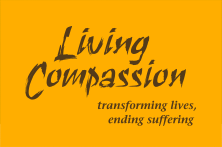Process Mapping
Gassho,
Way back in 2006 I was asked about “Process Mapping” and agreed to write up some directions for the process. That being a long time ago and the requests for a “how to” continuing, it seems a good time to go over the directions again.
Here goes:
1. Get the largest piece of paper you can manage and/or commit one wall in your domicile to the project.
2. Get supplies based on your desire to be creative. At a minimum you will need some post-its, a pen, and probably some tape for when the post-it glue gives out. Beyond these basics you may choose to have colored pens, different color or size post-its, highlighters—all is possible.
3. You can begin anywhere, with a big issue like changing jobs or leaving a relationship, or something as seemingly minor as resistance to dishwashing.
4. Tune in to where you are with the issue. (Let’s go with dishwashing.) Perhaps you walk into the kitchen, see the pile of dishes, and feel your stomach clench, your heart fall, and your energy collapse. Map that. Take each of those reactions (walk into kitchen, see the dishes, stomach clenches, heart falls, energy collapses) and put each on a post-it. Just a brief jotting to remind you of the reaction. You might decide to do behaviors in one color, thoughts in another, and feelings in yet another, or you might just go with basic yellow post-its and a blue ink pen!
5. Since the reactions described above are a sequence, you will want to place them sequentially on your piece of paper or wall. The next time you have the encounter with the sink full of dirty dishes, you might watch the previously described sequence, and then notice the voices that come in to tell you what all this means and who/what you are for having this issue. You jot those down, each on its own post-it, and put them on your map.
6. As you’re getting clearer with your dish issue, you will begin to notice things like a fleeting inspiration to go clean up the kitchen. Very likely you will soon notice the voice that talks you out of acting on that inspiration. Put those on post-its and get them on the map.
7. The next thing you might see is the part of you who really wants a clean kitchen. Put that person on the map and begin to look for the sensations, emotions, and thoughts associated with that part of you.
8. Keep going in this way until every nuance of your relationship with kitchens, dishes, and cleaning is somewhere on your map. There will be lots of voices, all kinds of emotions, beliefs, memories, resolutions, and beatings.
In the beginning, each life issue seems to require its own map. Soon, because this is process mapping, you will begin to see patterns. As the book title suggests, How You Do Anything Is How You Do Everything. Yes, in fact, the same voices, beliefs, assumptions, and projections show up in my housekeeping, relationships with people, money, work, and in how I drive! Yep, I’m “me” all over the place.
The benefits of process mapping are many and big. Writing down what is going on gets it out of the head and gives a much-needed distance from what lives in the darkness of a conditioned mind, never seeing the light of day. To know what’s going on, we have to pay attention. We have to watch the thoughts and emotions and behaviors to see what they are. This can greatly increase our present moment awareness and help us to step back and disidentify from our conditioned orientation to life. Instead of going through life in intimate relationship with the voices of conditioning, looking to them for guidance, believing their assessment of us, others, and life in general, we now are able to watch them from a place of conscious, compassionate awareness as they do what they do. As we watch, as we see through the process, the power conditioning has over us begins to fall away.
In gassho,
Cheri
